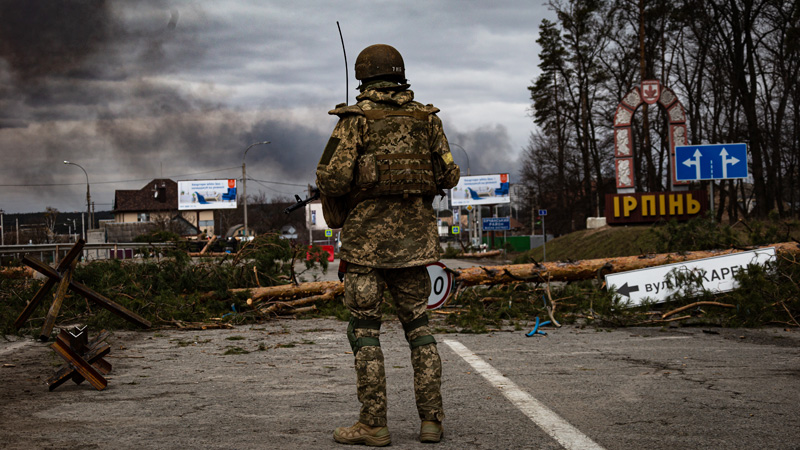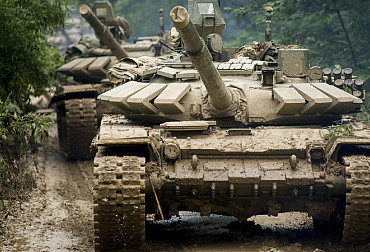Conventional high intensity warfare will continue to occur, albeit with some variations
In the context of the war in Ukraine, the logical implications of the war are also emerging. Although partial conclusions can be drawn when looking at the battlefield, some of them are very misleading and also very dangerous in the future, as they may lead to the disabling of the state's defences.
After the beginning of the 21st century, as the security environment has changed, the North Atlantic Alliance has focused more on counter-terrorism and post-conflict reconstruction. Thus, the relative ability of member states to fight a conventional medium- to high-intensity war has declined. With the advent of advanced information technology and the declaration of cyberspace as the fifth domain of warfare, the view has taken hold to some extent in society and in professional circles that conventional wars, in which armies massively deploy artillery, air power, infantry fighting vehicles, or tanks, are 20th century wars and that in the 21st century wars will only be fought in cyberspace, possibly using drones and artificial intelligence.
 Foto: Podle Tomáše Kopečného je pro úspěšný projekt obnovy Ukrajiny klíčové, aby rekonstrukce této země byla atraktivní pro soukromý kapitál, aby obnova Ukrajiny byla atraktivní pro české, evropské a světové společnosti. (ilustrační foto) | Shutterstock
Foto: Podle Tomáše Kopečného je pro úspěšný projekt obnovy Ukrajiny klíčové, aby rekonstrukce této země byla atraktivní pro soukromý kapitál, aby obnova Ukrajiny byla atraktivní pro české, evropské a světové společnosti. (ilustrační foto) | Shutterstock
Although, of course, cyberspace and the development of modern technologies in the form of drones or artificial intelligence can by no means be underestimated, the war in Georgia in 2008, the blitzkrieg occupation of the Crimean peninsula by the Russian army in March 2014 and the fighting between the Russian and Ukrainian armies in eastern Ukraine, the hot phase of the conflict between Armenia and Azerbaijan in November 2020, or the spread of fighting from eastern Ukraine to other Ukrainian regions after 24. February this year clearly shows that conventional wars have not disappeared and armies, including those of Alliance member states, must prepare for them.
A typical example of the misunderstanding of the deployment of heavy weapons and the fact that conventional war, or high-intensity armed conflict, has not disappeared is, for example, the interview of strategic studies professor Phillips O'Brien with Respekt editor Barbora Chaloupkova on 10 September 2022. Although casualties (especially of Russian tank equipment) may seem disproportionately high on the Ukrainian battlefield, it cannot be clearly argued that tanks are generally written off. As is well known, Russian tanks have a design problem with ammunition placement, and also in the vast majority of cases tanks lack an active protection system against missiles such as Javelin or NLAW. Moreover, the way Russian tanks have been deployed, especially in the initial phase of the war in Ukraine, has been tactically confusing to say the least.
If the tank really appeared to be an ineffective element on the modern battlefield, there would have been no reason for the Czech Republic, Poland, Slovakia and other European countries to send tanks to Ukraine at all. There would be no reason to send German Leopard 2 tanks from the Spanish army's stockpile, no reason to speculate about sending American Abrams tanks, etc. In fact, all the experience gained so far on the battlefield clearly shows that the Ukrainian army needs tanks and their specific tasks cannot be replaced in the cyber or other space.
Similarly, Professor O'Brien also comments on the case of the sinking of the cruiser Moskva by the Ukrainian anti-ship missile Neptun, thus concluding that warships globally are in big trouble in current conflicts. However, if we look at how many Russian vessels and what types of vessels the Ukrainian military has sunk, we can see that this is certainly not a disaster for the Black Sea Fleet, although there have been frequent random reports in the media about the sinking of several other important vessels. Regarding the importance of warships, or large and heavily armed vessels, we can take inspiration from the US Navy, which is certainly not going to reduce the number of its destroyers or aircraft carriers in any way, one of the reasons being the growing strength of the Chinese navy, which, according to the Pentagon, was the largest in the world in 2021.
Similarly, no hasty conclusions can be drawn from the deployment of Bayraktar drones or Javelin and NLAW missiles. Although these assets have helped the Ukrainian army in a particular phase of the war, they cannot be relied upon absolutely on a permanent basis. On the contrary, let us note how, since the summer, supplies of traditional military equipment in the form of tanks, armoured vehicles and, above all, barrel and rocket artillery have begun to increase to the Ukrainian army.
Is it fair to say that conventional war has returned? No. In fact, high-intensity conventional warfare has never disappeared and will continue to occur, albeit with some variations and additions as technology develops. The conflict in Ukraine is a sufficient reminder that modern warfare is not only fought with the help of super-modern means or in virtual space, but is fought on the real battlefield, mainly by means of tanks, infantry fighting vehicles and other armoured vehicles, or by means of barrel/rocket artillery.





















